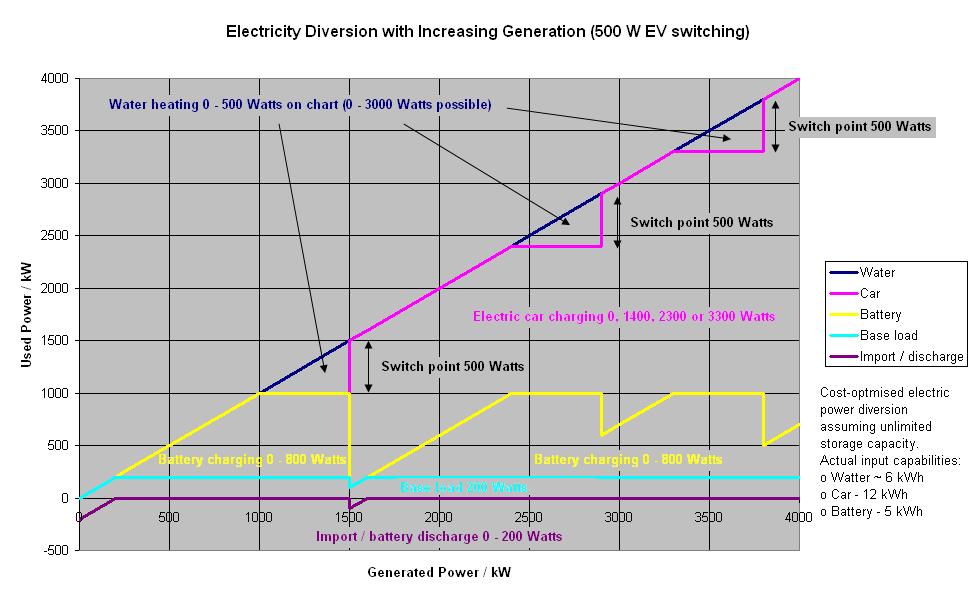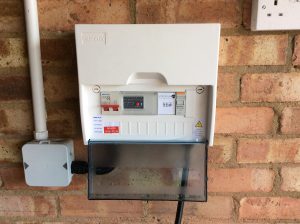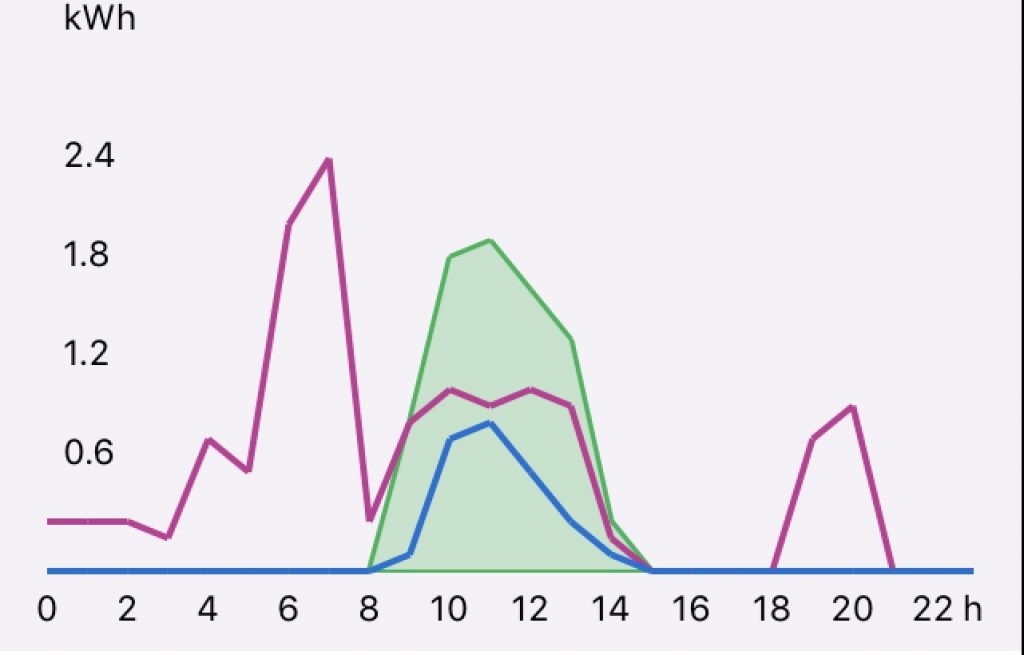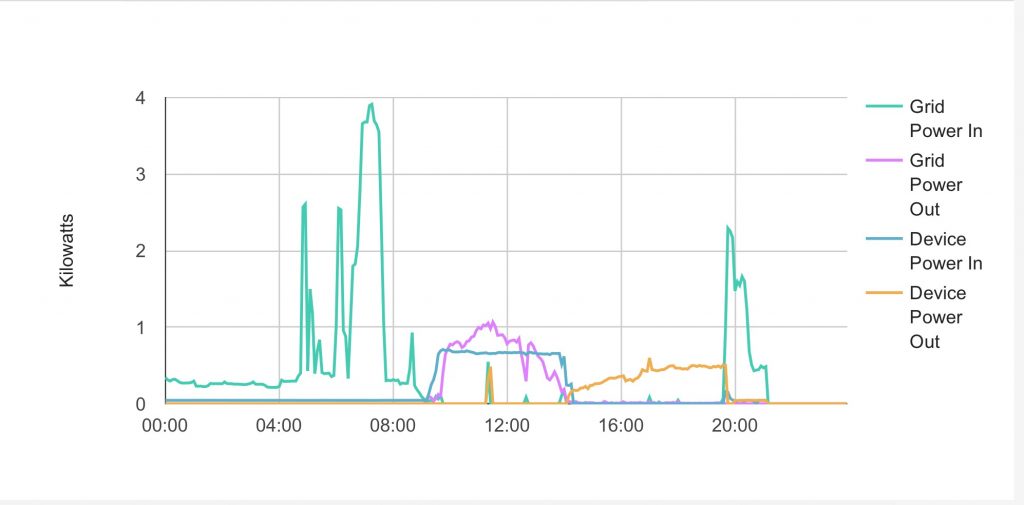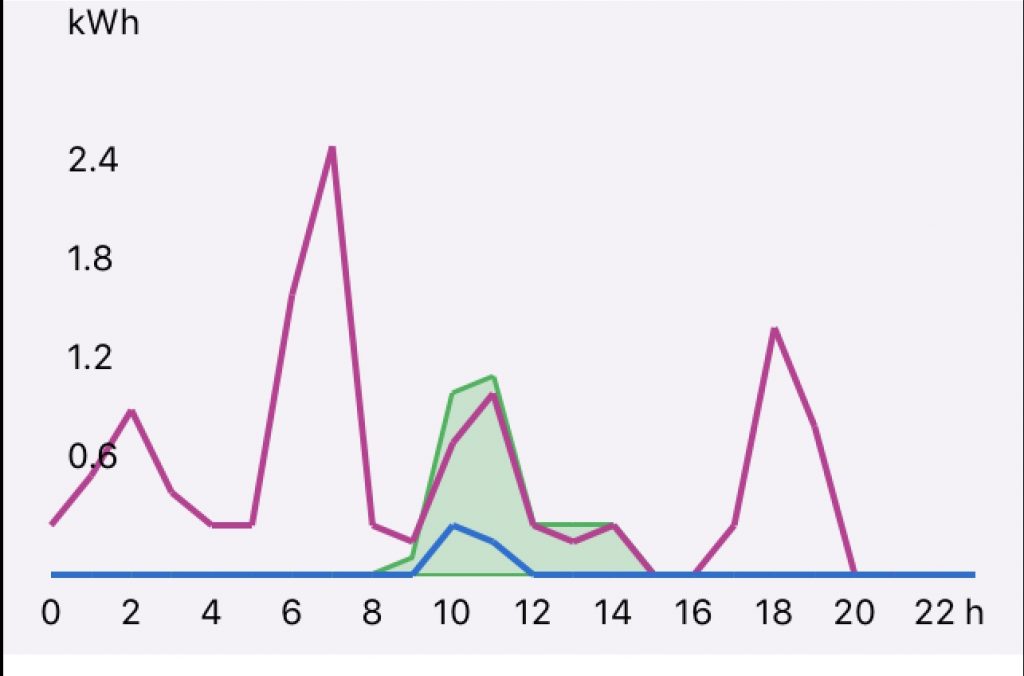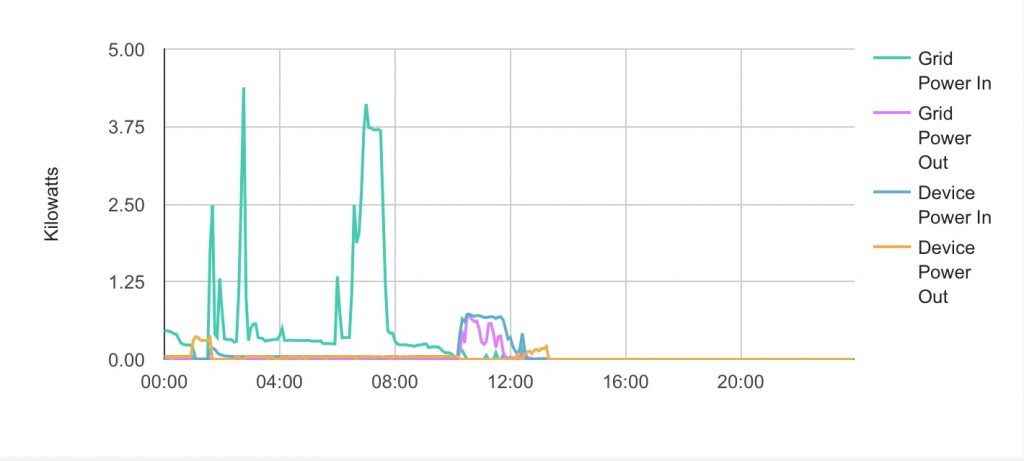Well, after consideration going back months, I did finally buy a battery (almost). Conceptually I’ve long thought that a time would come when I’d have a storage battery to store excess solar electricity from when I couldn’t use it all, and then use it at a later time; but until now I’ve been put off by various technical constraints and the cost. However a few weeks ago I saw an appeal for homeowners to participate in a battery trial sponsored by a DNO (the companies who own local substations and the cables down the street). After initially being told that the scheme was full, I was subsequently offered a place – presumably because others have dropped out. In exchange for giving the DNO 18 months of usage data (for which a data logger is installed in the house) I get a discounted storage system to keep.
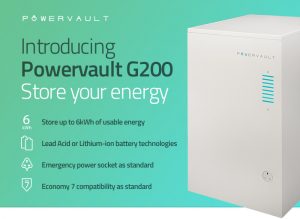 The battery that I’m being offered is a PowerVault with 4kWh usable capacity. It’s connected on the AC side of my inverter, and can be charged either by the surplus on my solar PV or, when there’s insufficient PV output, on cheap night-time power for later daytime use. It also has a UPS function that could usefully maintain power to my PC, internet, phone etc during a power cut. On the downside it has a relatively low output power so it can’t fully power larger consumers like the oven, car charger etc; although it can sustain lighting, TV, the fridge and a host of smaller loads that make up modern electricity consumption.
The battery that I’m being offered is a PowerVault with 4kWh usable capacity. It’s connected on the AC side of my inverter, and can be charged either by the surplus on my solar PV or, when there’s insufficient PV output, on cheap night-time power for later daytime use. It also has a UPS function that could usefully maintain power to my PC, internet, phone etc during a power cut. On the downside it has a relatively low output power so it can’t fully power larger consumers like the oven, car charger etc; although it can sustain lighting, TV, the fridge and a host of smaller loads that make up modern electricity consumption.
This means I now have multiple means to save surplus free power when it’s available and avoid buying power at the time of need which are, in order of financial attractiveness:
- Charge the storage battery avoiding later day time electricity purchase.
- Charge my electric car avoiding later night time electricity purchase.
- Make hot water avoiding later gas purchase.
The system itself is about the size of a slimline dishwasher and is designed to sit under a worktop. I however now have my battery installed in the study, under my desk, a location chosen because of its proximity to the consumer unit and because any waste heat from the battery will (along with my PC) help to heat an otherwise unheated room. It could alternatively have gone in the adjacent utility room, but I’d have needed to sacrifice a cupboard and the utility room has no need of any more heat as it’s home to the boiler already.
One of my concerns was whether the storage battery control system and immerSUN might interact as both sought to divert the same power to their respective storage devices, but I think I’ve worked out how to ensure the storage battery always has priority while allowing the immerSUN to work simultaneously. One could imagine that, for example, at the height of a summer day the maximum 800VA would be going into the battery while the immerSUN managed nearly 3kW into car and/or hot water.
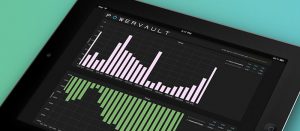 When it comes to viewing system activity then there’s opportunity for me to see what’s happening or has happened on any day through the cloud servers for both the storage battery and the immerSUN. I’ve not got to grips with the storage batteries’ data logging yet. However, from the immerSUN’s perspective, battery charging looks like additional household load up to 800 VA (but not to the point of exceeding PV output), while battery discharging looks like reducing the household load by up to 1200 VA (but not beyond zero).
When it comes to viewing system activity then there’s opportunity for me to see what’s happening or has happened on any day through the cloud servers for both the storage battery and the immerSUN. I’ve not got to grips with the storage batteries’ data logging yet. However, from the immerSUN’s perspective, battery charging looks like additional household load up to 800 VA (but not to the point of exceeding PV output), while battery discharging looks like reducing the household load by up to 1200 VA (but not beyond zero).
And why did I buy a battery (almost)? Well, ignoring the fact that I have a battery but no invoice so far, I won’t have to pay the full installed price because of the subsidy provided by the trial so I’ve arguably only bought some of the battery.




